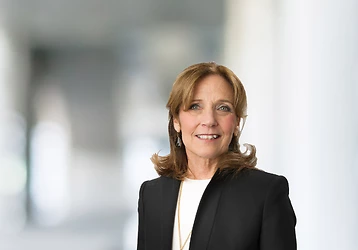WAYMO BECOMES THE FIRST TO START TESTING LEVEL 4 VEHICLES ON PUBLIC ROADS WITHOUT A DRIVER; ALSO THE FIRST TO PROVIDE DOT-RECOMMENDED “SAFETY REPORT”
Waymo, Google’s self-driving car spin-off, publicly took the lead in the race to bring Level 4 autonomous vehicles to the public on November 8th when CEO John Krafcik showed a Web Summit conference audience video of modified Chrysler Pacificas moving on public roads in the greater Phoenix area without human drivers. Krafcik announced that the company will further expand testing of the driverless vehicles to its “Early Rider Program” – a public taxi service pilot open to Phoenix area volunteers as part of Waymo’s effort to understand better how people will want to use self-driving technology. (In keeping with one of the few Arizona requirements for autonomous vehicles, the vehicles will always have a licensed driver as a passenger in the vehicle.)
Many industry observers hold the view that Google/Waymo has been in the lead since they first entered the race in 2009 and then began testing on public roads in 2012. Waymo’s “first Level Four on the road” coup closely followed another Waymo first mover advantage on October 12: the publication of the first “voluntary” safety assessment of an autonomous vehicle. The preface to the 43 page Safety Report acknowledges the company’s intent to address the Department of Transportation’s “Voluntary Guidance” for autonomous vehicle developers issued on September 17, 2017. The DOT Guidance essentially told companies involved in autonomous vehicle development that they needn’t wait for formal FMVSS guidance from the NHTSA, thus giving Waymo the green flag to put its Level 4 vehicles on regulation-free Arizona public roads. Arizona in June of 2016 to Level 4.
The Waymo Safety Report was obviously carefully considered and long in the planning. Replete with sophisticated high-quality photography, graphics, and layout, it is clearly intended to win over reluctant consumers (a recent AAA study revealed that 75% of the US population is afraid to ride in an autonomous vehicle) as well as to satisfy regulatory bureaucrats. But given the highly competitive environment that exists around this space, Waymo has provided more specific information than might have been expected.
A major part of the Report is “How Waymo’s Self-Driving System Works”, seemingly geared toward the wary public and containing understandable descriptions of 1) the vehicle sensors; 2) the self-driving software; 3) the continuously evolving “Operational Design Domain”, i.e., the conditions (such as geographies, road types, speed range, weather, time of day, and traffic laws) under which a self-driving system can safely operate; and 4) the “minimal risk condition”, i.e., ensuring the vehicle can transition to a safe stop. This section also references data recording and vehicle cybersecurity.
Potentially of greatest interest to many Butzel clients is the section on Testing and Validation Methods. Waymo showcases its NASA-influenced “multi-layered approach” to safety testing; i.e., testing at every level, starting with the base vehicle. The Report also reveals that FCA, the OEM of the “modified” version of the 2017 Chrysler Pacifica hybrid minivan currently being used by Waymo, provides the FMVSS certification for the “modified” vehicle. Waymo takes responsibility for engineering and integrating its (Waymo’s) self-driving system “in collaboration” with FCA, and refers to further testing it has undertaken on the completed vehicles in labs, simulation and on the test track “to ensure that our vehicle continues to function safely after the addition of our self-driving system.” (Disappointingly, this part of the Report is lacking in any detail.)
Butzel clients may also find the sidebar in this section pertaining to safety and testing involving its supply chain of interest. Waymo describes its “multi-layered approach” as meaning that they “analyze and test our system at the lowest component level to ensure the performance and reliability of our most critical systems”, following testing of a camera component as an example.
Waymo’s leadership position appears to be in large part attributable to its ability to capitalize on a variety of experts and data-driven decision making. The relationship model that Waymo has with FCA and its suppliers emphasizes this. Waymo is leading on the technology side, including outlining software iterations, simulations of what car will do, and what it would have done in the event of non-human intervention during the development stage. FCA is leading on standard vehicle issues like vehicle dynamics, HMI, and industry-standard hardware and testing considerations.
Waymo is a robust example of the profound changes to the automobile market structure that the Butzel team has been predicting. Their latest announcements indicate fresh and innovative approaches to issues such as liability, certifications, vehicle development and intellectual property, consumer acceptance, ownership, and manufacturing economics. The Butzel team will be providing further analysis of these in the near future.
Catherine M. Karol
313.225.5308
Mitchell Zajac
313.225.7059











